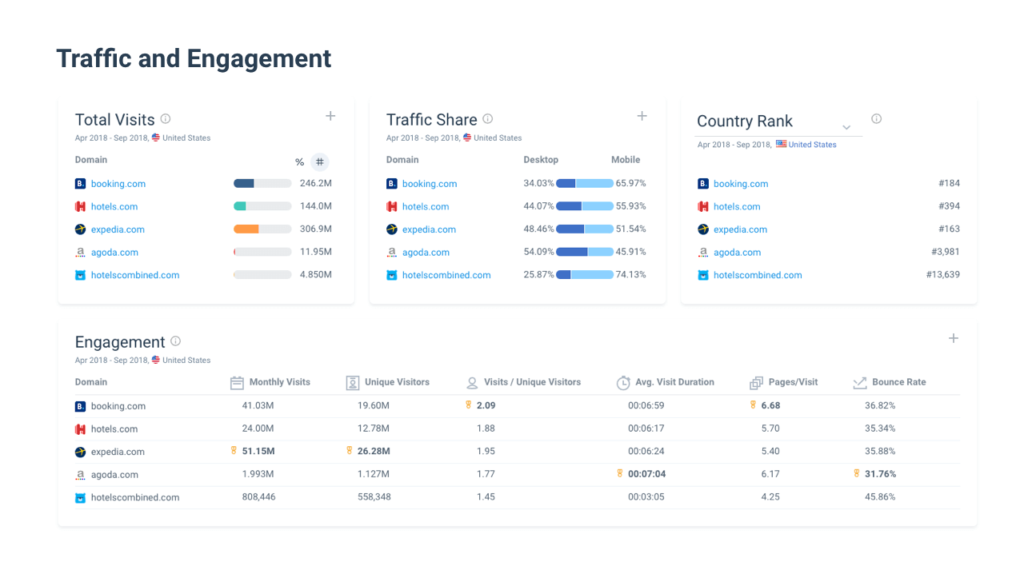What is Competitor Analysis in SEO?
An SEO competitor analysis (also known as competitive analysis) is the process of researching your direct search competitors to learn about their target keywords, content strategy, backlink profile, and other tactics in order to reverse engineer the most successful elements of these tactics into your own SEO strategy.
At, Times Tag! We are the premier SEO agency in Ahmedabad, India, offering the best quality SEO strategy and local SEO.
Rather of guessing which keywords to target, which content to write, or which links to develop, you can investigate your rivals, assess what is currently working for them, and build on their success.
Why is Competitor Analysis Important for SEO?
An SEO competitor analysis helps businesses understand their industry’s strengths and weaknesses, capitalize on them, and prioritize SEO tasks. It helps identify competitors, target keywords, understand the competitive landscape, cover relevant topics, and find valuable links. This powerful research strategy helps
- achieve goals such as higher rankings
- increased traffic
- Conversions
- loyal customer acquisition
Consider this as a real-world example
Imagine you run a pet supply business and are one of three competitors in town. Your consumers are satisfied, but you know they go to other stores since they can’t get everything in one location, So, you go on a road trip together with competitive intelligence. You visit the other store to understand the popular items they offer. Offering these items yourself–or even superior ones – you help your customers make fewer trips, and in turn, you gain more business and, eventually, brand advocates!
How to Conduct Competitor Analysis for SEO Step-by-step Guide
There are several approaches to doing a competitive analysis for SEO, but in this book, we’ll walk you through five key processes in each of the following chapters
1. Identify your SEO Competitors
Who are your competitors? You may believe you know, or you may have made assumptions, but they are not always brands that provide the same items or services as you! To discover your SEO competition, conduct SERP research or, better yet, use an SEO tool.
2. Run a Keyword Gap Analysis
A keyword gap analysis can help you identify chances to boost your exposure by targeting phrases that rivals rank for but your website does not. By focusing on areas where your rivals have a better online presence, you may reach a larger audience and generate more traffic.
3. Evaluate the SERP for user intent
Understanding your target audience’s aim is critical, whether they are looking for a solution, an answer to a question, a product, a service, or a local place. You’ll discover how to examine SERPs and how your rivals cater to your target audience’s wants.
4. Analyze and enhance your competitor’s content
By analyzing their performance, SEOs may learn about successful content tactics, keyword targeting, and user engagement. With this knowledge, you can improve your content and outperform competitors in the ever-changing world of SERPs.
5. Perform a Competitor Backlink Analysis
It’s time to reveal your competitors’ backlink profiles. With the right tools and methods, you may acquire valuable insights into the quality and quantity of links supporting your competitor’s authority. By exploiting this data and strengthening your backlink strategy, you’re positioning yourself for a SERP takeover!
Tools and Resources for Competitor Analysis
SEMrush

This is the most popular and powerful SEO tool, therefore we have to start with it.
On Robbie Richard’s survey of top SEOs. SEMrush displays both organic and paid search results for any website, mobile or desktop, in any nation; simply enter the URL.
It also provides a paid version, which includes site audits, brand tracking, and more. The only downside to SEMrush is that it has so many features, that it takes a while to find everything!
Buzzsumo

Buzzsumo enables you to view the top-performing content for relevant themes to your brand and particular rivals. The toll takes into account both a piece of content’s involvement on social media and its overall number of shares throughout the web.
Not only does this clue you in on who’s killing it in terms of industry content but also it helps you identify potentially hot topics to explore yourself. Whether you’re seeking industry movers and shakers or just a fresh blog post topic, Buzzsump has the authoritative answers.
Similarweb

Similarweb is an incredibly thorough tool for content and SEO. The tools allow you to delve deeply into your competitors’ content and where their traffic comes from.
For example, you may track a site’s referral traffic and where its users finish up. More significantly, content marketers may observe what topics visitors are searching for and what other related sites they visit.
Feedly
If you want to keep an eye on a competitor’s material without having to continually monitor their blog, go no further than Feedly.
Feedly is a content aggregator that collects and organizes material as it is released, including that of rivals. This allows you to view the trending subjects covered by your rivals on a single page.
Ahrefs

There is no free version; however, you can receive a free two-week trial. Once logged in, you’ll have access to the most comprehensive database of keyphrases of any of these analytic tools four billion keyphrases. This is a powerful user tool with numerous functions beyond keyword monitoring. Not surprising, it’s #2 on Robbie’s leaderboard.
Considering targeting a phrase? Ahrefs provides detailed reports with search volume, projected traffic, competition, and SERP analysis.
Ahrefs also includes a lot of other reports for tracking keywords and links. These go beyond competitive analysis. These are power tools for serious SEOs. if the search is critical to your company, you likely need these options.
Case Studies and Examples
Several not-unusual pitfalls can undermine your efforts when undertaking a competitor analysis for search engine marketing.
Focusing an excessive amount on competition and not enough on your strengths can skew your approach. Recognizing your competitors is crucial, but leveraging your strengths will set you aside.
Overlooking indirect competitors can limit your perspective. Indirect competitors, the ones supplying alternative answers to the same problem, can impact your target audience and have to be taken into consideration in your evaluation.
Neglecting regular updates on your analysis can render your records obsolete. SEO landscapes change unexpectedly, and staying up to date with modern tendencies and shifts in your competitors’ techniques is vital for maintaining a competitive edge.
Avoiding these errors guarantees an extra balanced, comprehensive, and powerful competitor evaluation for search engine marketing, ultimately improving your content strategy and seeking engine overall performance.
Conclusion
If you want to beat your competitors, we recommend reading this guide from beginning to end. We made it as brief and understandable as possible because mastering the fundamentals of SEO is an important first step toward attaining your online business objectives.
Go at your speed, and take note of the resources we link to throughout the chapters; they, too, are worth your attention.
If you want to take a more systematic and complete approach to studying SEO or teach your entire staff! Check out the Times Tag we’ve gathered all the tools you’ll need to learn how to confidently apply a competitive analysis plan, including innovative learning methodologies, task lessons, and quizzes to evaluate your understanding.









